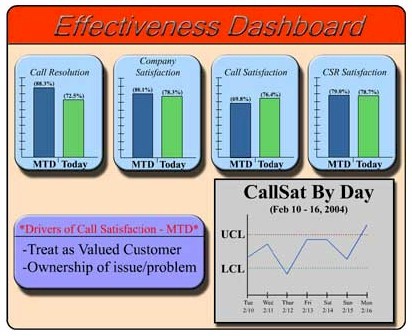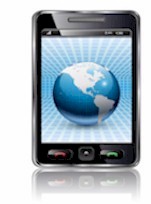|
|
DSC Tech Library
 This section of our technical library presents information and documentation relating to Call Center Company Technology and Best Practices plus software and products.
Since the Company's inception in 1978, DSC has specialized in the development of communications software and systems. Beginning with our CRM and call center applications, DSC has developed computer telephony integration software and PC based phone systems. These products have been developed to run on a wide variety of telecom computer systems and environments.
This section of our technical library presents information and documentation relating to Call Center Company Technology and Best Practices plus software and products.
Since the Company's inception in 1978, DSC has specialized in the development of communications software and systems. Beginning with our CRM and call center applications, DSC has developed computer telephony integration software and PC based phone systems. These products have been developed to run on a wide variety of telecom computer systems and environments.
The following article presents product or service information relating to Call Center Vendors and customer service help desks.
Do your Customers Help Drive Service?
Dr. Jodie Monger, PhD, President
Dr. Jodie Monger asks if you’re benchmarking the correct operational metrics in your call center.
We are never at a loss for numbers. We live by our center’s statistics – we continuously post the numbers, report our operational metrics, worry or feel elated by these numbers and even benchmark our operational metrics against other call centers.
What would you say if I told you were celebrating or worrying at the wrong times? This is exactly what can happen if you are not reporting and benchmarking the caller perception of your service delivery.
Caller perception is the reality that you must deal with – it’s more real than your Service Level or Average Length of the Call. The list of metrics you watch on a daily basis is most likely missing the caller. Your callers are critical to the dashboard you are monitoring. Does it really matter what your operational metrics look like without knowing if you are also effective to the callers? Without the customer you really do not know if your operational metrics are out of line.
Do you act when X drops below a certain point or Y increases above a certain point? Are the actions you take reflective of the assumption that these movements ultimately affect caller satisfaction? In many cases, it probably does but you cannot prove that when asked to defend the performance of your center. You can prove many things when your dashboard has a complete set of metrics.
Quantification of the operational metrics is not an issue, so your challenge becomes one of accurately measuring service delivery from the callers’ perspective. The most ideal method to collecting callers’ perceptions in a call center is by using real-time post call surveys. These are by far the best way to achieve the metrics you need. You deliver service and the caller tells you how it went and the feedback results become part of your Effectiveness Dashboard.
Caller satisfaction measurement programs have two goals. The first is to provide results to the agent level that are effective for coaching. Agents and teams should be given report cards that include the analytics around the drivers of caller satisfaction and also the customer emotion behind the numbers via transcribed customer comments. The second goal is to provide a daily dashboard containing the voice of your callers as an alert to an issue or a successful alteration to the issue identified and managed yesterday.
By including Customer Metrics on your dashboard, you can keep your finger on the true pulse of the center. Knowing how day-to-day conditions translate to the customers’ perception of service delivery is invaluable. Also valuable is the ability to identify and then quantify how extraneous conditions are affecting your metrics. What is the affect of your company’s Marketing group sending out a letter about a new product or service?
What was the effect of your center not being prepared with information to handle the inquiries or questions? Can you tell your CEO how an article in the Wall Street Journal about your company negatively impacted Overall Company Satisfaction? How is First Call Resolution affected by a technical glitch that prevented your agents from assisting customers? Without Customer Metrics you cannot answer these questions accurately.
From the customers’ perspective, there are major dials to include on your dashboard. You need to watch the First Call Resolution metric. Repeat calls are a tremendous drain on our budget and significantly impact caller satisfaction. Call satisfaction and CSR satisfaction highlight issues such as a reduction in Service Level or CSRs who do not communicate a sense of ownership of the customers’ issue (drill down to behaviorally anchored attributes specific to the CSR). Multivariate analysis identifies the Drivers of Caller Satisfaction and highlights the area that will yield the most to overall satisfaction via an improvement in delivery. And finally, CallSat will vary by day and you need to be concerned only when the value drops below the LCL (Lower Control Limit) and look for best practices when above the UCL (Upper Control Limit). Scores by day that fall within the UCL and LCL are within the normal range of acceptance.
Figure 1

Use your numbers wisely and create a comprehensive dashboard to guide you through the service delivery management maze. Adding the Effectiveness Dashboard to your desktop is not a difficult thing to do. Start a best practice in your call center and create this tool today.
Dr. Jodie Monger, PhD, President
Dr. Jodie Monger, PhD is the President of Customer Relationship Metrics, L.C. Prior to joining Metrics, she was the founding Associate Director of Purdue University's Center for Customer-Driven Quality. Her expertise is working with Fortune 1000 companies to help them create post-call survey programs using CATs® (Completely Automated Telephone surveys).
CRM Call Center Software
 Database Systems Corp. (DSC) has been providing CRM Customer Relationship Management solutions to businesses and organizations for 2 decades.
TELEMATION is a Customer Relationship Management (CRM) application employed in a wide variety of organizations including contact centers, help desks, customer service centers, service bureaus, reservation centers and corporate call centers. The package has extensive CTI features and is fully integrated with our PACER phone system. TELEMATION operates on Linux, Unix or Windows servers. Software programmers can develop call center applications quickly using the robost features found in the Telemation toolkit.
Database Systems Corp. (DSC) has been providing CRM Customer Relationship Management solutions to businesses and organizations for 2 decades.
TELEMATION is a Customer Relationship Management (CRM) application employed in a wide variety of organizations including contact centers, help desks, customer service centers, service bureaus, reservation centers and corporate call centers. The package has extensive CTI features and is fully integrated with our PACER phone system. TELEMATION operates on Linux, Unix or Windows servers. Software programmers can develop call center applications quickly using the robost features found in the Telemation toolkit.
Call Center Phone System
 The PACER is a call center phone system that handles inbound and outbound calls for a wide range of contact centers. Calls are either initiated by the phone system or accepted from the outside and distributed in an intelligent fashion to your service agents. The PACER includes ACD and IVR components, plus call recording capability. Using industry standard components, the PACER phone system has features and functions that can only be found in large scale PBX’s, but at a fraction of the cost. And the PACER has predictive dialing capability that cannot be found in most of these larger phone systems. The PACER phone system can connect calls to your employees working at home or in a local or remote office. The PACER communicates with applications written on Unix, Linux, or PC servers over a LAN. For a complete product presentation, download our PACER demo.
The PACER is a call center phone system that handles inbound and outbound calls for a wide range of contact centers. Calls are either initiated by the phone system or accepted from the outside and distributed in an intelligent fashion to your service agents. The PACER includes ACD and IVR components, plus call recording capability. Using industry standard components, the PACER phone system has features and functions that can only be found in large scale PBX’s, but at a fraction of the cost. And the PACER has predictive dialing capability that cannot be found in most of these larger phone systems. The PACER phone system can connect calls to your employees working at home or in a local or remote office. The PACER communicates with applications written on Unix, Linux, or PC servers over a LAN. For a complete product presentation, download our PACER demo.
|


 This section of our technical library presents information and documentation relating to
This section of our technical library presents information and documentation relating to 
 Database Systems Corp. (DSC) has been providing CRM Customer Relationship Management solutions to businesses and organizations for 2 decades.
TELEMATION is a Customer Relationship Management (CRM) application employed in a wide variety of organizations including contact centers, help desks, customer service centers, service bureaus, reservation centers and corporate call centers. The package has extensive CTI features and is fully integrated with our PACER phone system. TELEMATION operates on Linux, Unix or Windows servers. Software programmers can develop call center applications quickly using the robost features found in the Telemation toolkit.
Database Systems Corp. (DSC) has been providing CRM Customer Relationship Management solutions to businesses and organizations for 2 decades.
TELEMATION is a Customer Relationship Management (CRM) application employed in a wide variety of organizations including contact centers, help desks, customer service centers, service bureaus, reservation centers and corporate call centers. The package has extensive CTI features and is fully integrated with our PACER phone system. TELEMATION operates on Linux, Unix or Windows servers. Software programmers can develop call center applications quickly using the robost features found in the Telemation toolkit.
 The PACER is a call center phone system that handles inbound and outbound calls for a wide range of contact centers. Calls are either initiated by the phone system or accepted from the outside and distributed in an intelligent fashion to your service agents. The PACER includes ACD and IVR components, plus call recording capability. Using industry standard components, the PACER phone system has features and functions that can only be found in large scale PBX’s, but at a fraction of the cost. And the PACER has predictive dialing capability that cannot be found in most of these larger phone systems. The PACER phone system can connect calls to your employees working at home or in a local or remote office. The PACER communicates with applications written on Unix, Linux, or PC servers over a LAN. For a complete product presentation, download our PACER demo.
The PACER is a call center phone system that handles inbound and outbound calls for a wide range of contact centers. Calls are either initiated by the phone system or accepted from the outside and distributed in an intelligent fashion to your service agents. The PACER includes ACD and IVR components, plus call recording capability. Using industry standard components, the PACER phone system has features and functions that can only be found in large scale PBX’s, but at a fraction of the cost. And the PACER has predictive dialing capability that cannot be found in most of these larger phone systems. The PACER phone system can connect calls to your employees working at home or in a local or remote office. The PACER communicates with applications written on Unix, Linux, or PC servers over a LAN. For a complete product presentation, download our PACER demo.